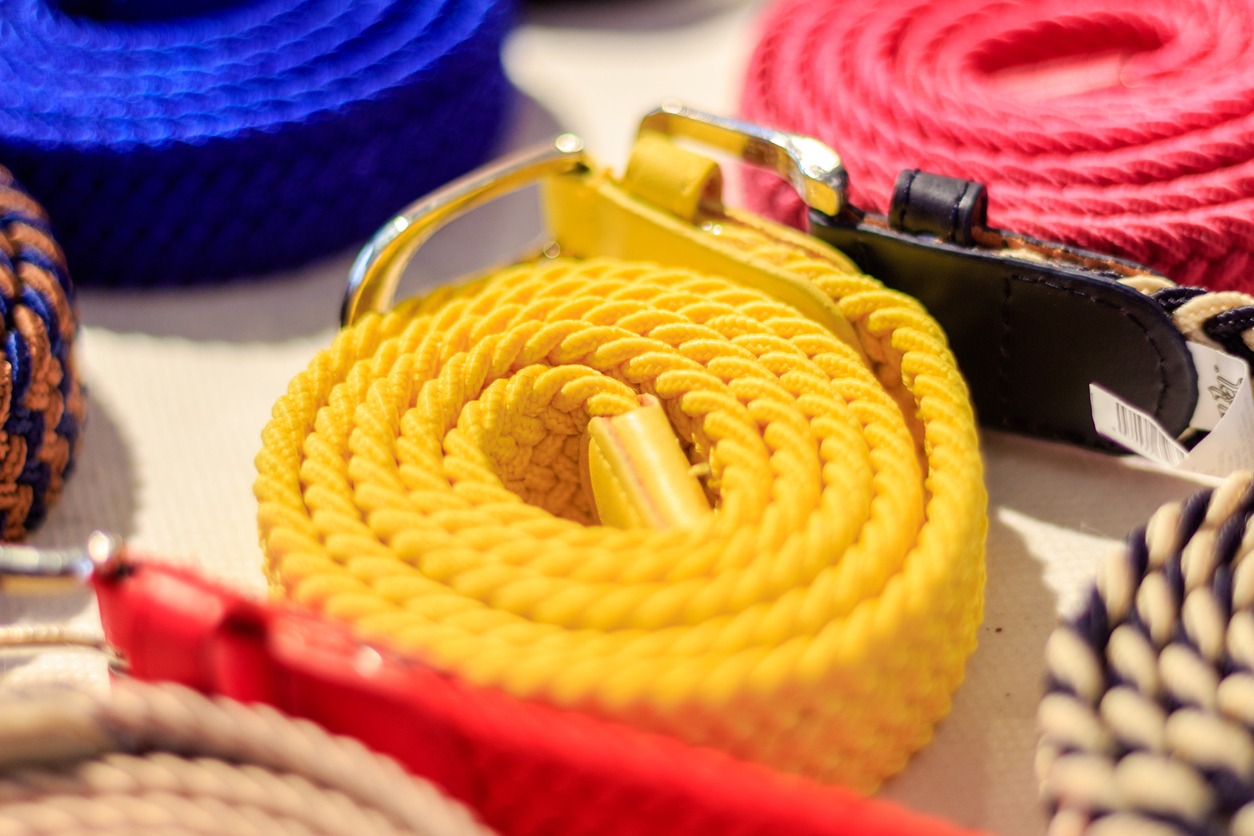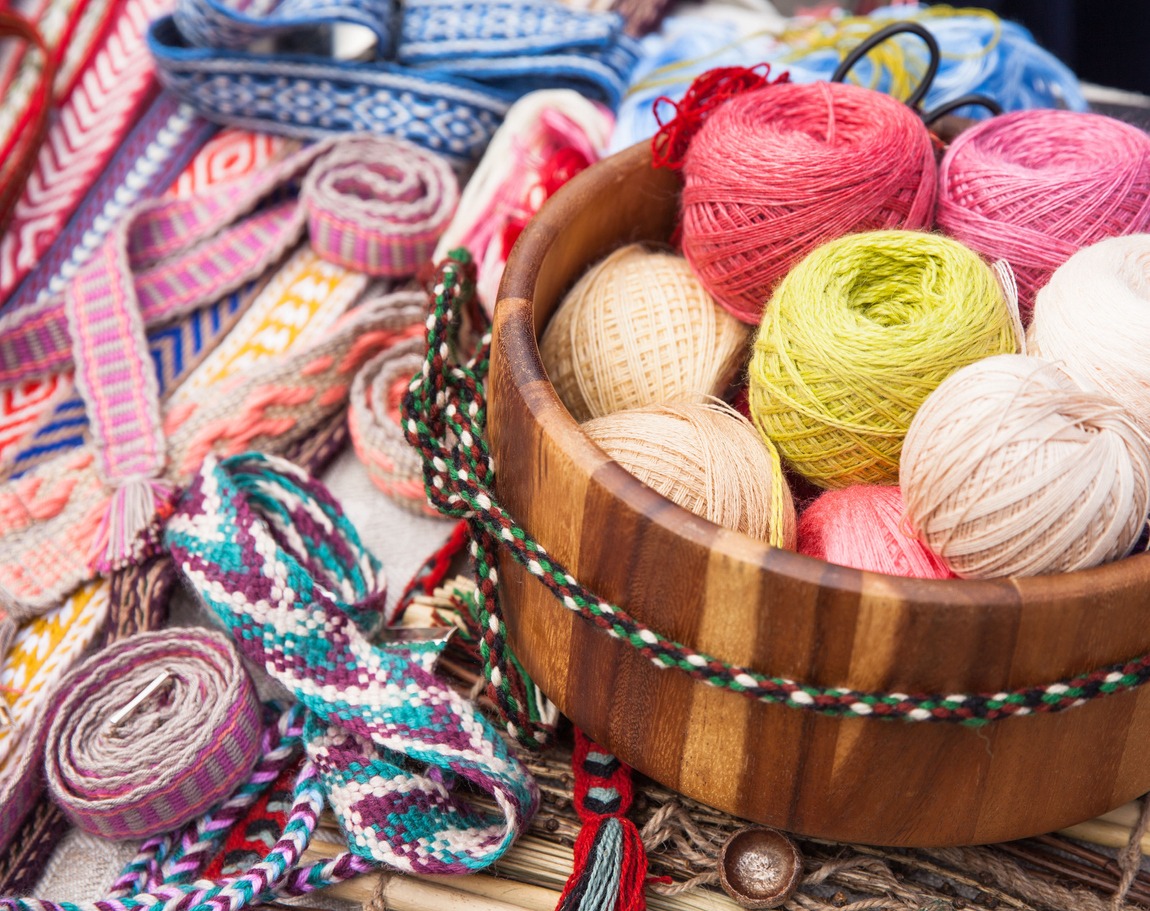Since the Bronze Age, a variety of materials have been used to create belts. In the 19th and early 20th centuries, belts were predominantly worn by the military. However, by the 1920s, belts were once again popular among civilians. In women’s fashion, more so than in men’s fashion, the belt is frequently viewed as an essential visual item that completes a “look” and serves to constrict the waist.
Regardless of the type of material used to construct a belt, all belts share a trait of flexibility that allows for pleasant movement while providing necessary garment support.
Here are some commonly used belt materials:
1. Leather
Egypt has unearthed leather clothing artifacts reaching back to at least 1300 B.C., and the first documented use of leather belts stretches back thousands of years to the Roman period. The technique of tanning and preserving leather for clothing dates back thousands of years, having progressed from simply drying animal skins in the sun to the use of contemporary chemical solvents.
Due to the amount of effort involved in the tanning process, leather belts are typically more expensive than belts made of textile or recycled materials. Despite the increasing usage of cheaper, alternative materials to create belts, leather belts continue to dominate the market.
2. Canvas
Canvas is a durable, woven cotton or sometimes hemp cloth. This fabric is plain-woven, with a crisscrossing weave pattern. Utilizing fabric instead of leather reduces the amount of work required during production, resulting in a lower-priced product.
Canvas belts were first adopted by the military as a less expensive means of outfitting military forces. Eventually, their use crept into the civilian mainstream, becoming a popular fashion accessory in the 1980s and early 1990s before falling out of favor until the recent revival of 1980s fashion.
3. Repurposed Rubber
The production of long-lasting belts has been made more engaging and environmentally conscious through the reuse of abandoned rubber materials. Companies like English Retreads collect discarded inner tubes from truck stops and transform the rubber into handbags, wallets, and belts. The procedure and product are appealing to individuals who seek to live a more ecological and ethical lifestyle, as well as vegans who wish to avoid using any animal products whatsoever.
4. Balata Belts
The only difference between these belts and rubber belts is the use of balata gum instead of rubber. These belts are resistant to acid and water and are unaffected by animal oils or alkalis. Above 40 degrees Celsius, balata begins to weaken and get tacky, hence balata belts should not be stored at temperatures above this level. The tensile strength of balata belts is 25% greater than that of rubber belts.
What is a woven belt?
The primary distinction between a woven belt and a leather belt is the materials utilized to produce this one-of-a-kind fashion accessory. The elasticized straps for woven belts are made of intricately woven webbing made from cottons obtained ethically. This trendy accessory is the ideal adaptable and highly functional addition to your wardrobe, having been handcrafted in England by expert artisans.
Here are some benefits of woven belts.
Adjustable and Versatile
The construction of a woven belt precludes the incorporation of fixed buckle holes into the design. The buckle prong simply slips between the webbing anywhere you desire, giving for a highly customizable and adaptable fit. No longer will weight fluctuations need the purchase of a new belt, and a woven piece may slide effortlessly between your waist and hip without the need for additional buckle holes. Woven belts are an easy-to-wear, must-have accessory due to the fact that they are fully adaptable to the wearer’s demands.
Support and Solace
A belt should be pleasant to wear while providing support and keeping garments in the appropriate posture.
The comfort provided by an elasticized belt is a result of the material’s qualities. The elastic belt strap flexes with movement and does not impede the wearer’s movement, but also secures the waist. This produces a snug, comfortable fit that will conform to the wearer’s body.
Commonly Used Belt Weave Patterns
Weaving is the process of weaving threads over and under each other to create a finished fabric. Weaving is an excellent artistic expression that utilizes threads. Two distinct sets of yards are interwoven throughout the weaving process to make the finished fabric.
1. Plain Weave
Plain weave, also known as tabby weave or basic weave, is a fabric in which all threads run perpendicular to one another. Looking closely at this weaving structure, the woven fabric will appear to have a basket-like checkered pattern of continuously intertwined threads.
Simple fabric weave examples include flannel, chiffon, and organdy. Plain weave fabrics are durable and dependable, and they are used for a variety of applications, including clothing and furniture. Basket weave and rib weave are examples of weave patterns that differ from the usual plain weave.
In general, simple weaves are quite durable and pill-resistant. Because woven cloth is often not stretchy, it is straightforward to stitch without gathering or puckering.
2. Twill Fabric
When a warp thread repeatedly passes under and over a weft thread, a twill weave results. It weaves two or more strands alternately over and under each other. This fabric’s twill weave provides an excellent drape and is both sturdy and delicate.
There are diagonal ribs in the weaving. Denim is the most preferred twill fabric by a wide margin.
Variations in the twill pattern can be created by altering the width and direction of the twill. In twill hopsacks, the twill goes from right to left, but the diagonal weaving is more apparent. The cavalry twill is a broader twill, while the whipcord twill is another type of twill.
3. Rib Weave
Rib weave is a sort of simple weave among various types of cloth weaves. This is because its construction is nearly identical to that of the plain weave. The essential structure maintains the same sequence of threads flowing over and under the yarns in an under-and-over configuration.
Because the warp or weft threads are heavier, the weaving is lifted. Typically, the weft thread is elevated, giving the fabric a ribbed appearance. In contrast to plain weave, rib weave uses only a single heavy yarn.
Colors may be woven into rib-weave fabrics to create stripes or checkered patterns. They accomplish this by using numerous yarns of different colors. Moreover, finishing can be added to rib weave patterns. Waterproofing and a fire-resistant coating are two of them. This sort of weave design includes Grosgrain and Poplin fabric variations.
4. Striped Weave
A striped weave fabric features a range of stripe designs. A pinstripe, for instance, is a single, thin striped thread running the length of a garment. You can produce an Eton stripe by interweaving alternately lighter and darker weft and warp threads. This type of weave is also known as a hairline weave.
To conclude
Belts are made from a variety of materials. Each belt features a buckle and eyelets. It is essential to study everything about the fabric’s constituents, as they might alter the fabric’s softness, texture, strength, stability, tear resistance, and drape. These help you decide how you will use woven fabrics for belts.




